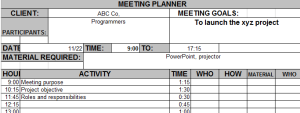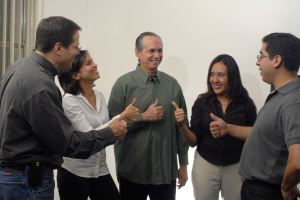 Delegating work is essential to the successful growth of any organization and thus it is imperative for leaders and managers to learn to delegate properly.
Delegating work is essential to the successful growth of any organization and thus it is imperative for leaders and managers to learn to delegate properly.
In a previous article I explained how to determine what to delegate and also the difference between assigning a task and delegating. You may want to refer back to that article before going ahead with these steps.
Step 1: Planning
Delegating work involves people taking on new responsibility and this requires training and coaching. When you assign work to someone it means they already have the skills and knowledge to get the task done.
 Thus you need to plan what training and coaching is required for the person to take on the new responsibility. Who will provide the training and coaching? When and how will it take place? The answer to these questions will depend on the complexity of the tasks involved and the person who you are delegating to.
Thus you need to plan what training and coaching is required for the person to take on the new responsibility. Who will provide the training and coaching? When and how will it take place? The answer to these questions will depend on the complexity of the tasks involved and the person who you are delegating to.
For example you might want to give more responsibility and authority to someone looking after general office work. Another person needs to be hired to take on some of the tasks. You want your employee to supervise the work of the new employee, but they have never supervised anyone before. Thus the scope of their job is changing and their role description should be revised. In this case there should be some training and coaching on supervision.
As part of your plan, set a date for when you want the employee to be fully autonomous n assuming the new responsibilities. You might consider using my goal planning worksheet to help you plan out the delegation project.
Step two: Meet with employee
 Meet with the employee and explain what you want to delegate to them. Tell them that you will be providing training and coaching and this is an opportunity for them to grow and to contribute to the evolution of the business.
Meet with the employee and explain what you want to delegate to them. Tell them that you will be providing training and coaching and this is an opportunity for them to grow and to contribute to the evolution of the business.
Certain people tend to be cautious when faced with change as it means they could fail or become stressed. Point out their strengths and skills and let them know you feel confident to delegate the work to them.
Review the new job description with them so it is clear what you are expecting. Schedule the training sessions.
Step three: Train and coach
 When providing training and coaching it is important not only to explain what to do but to actually demonstrate it. If possible have the person perform the task so you can observe, give feedback and adjust as necessary.
When providing training and coaching it is important not only to explain what to do but to actually demonstrate it. If possible have the person perform the task so you can observe, give feedback and adjust as necessary.
Step four: Follow-up
You must follow-up with the employee to ensure they are performing as expected and meeting your expectations. Be flexible in that the person’s style of work may be different from yours and they might do things in their own way but still produce the desired results.
Provide them with plenty of positive feedback to build their confidence and self-esteem. This will reinforce that they are doing the right thing and will keep them open to new delegation opportunities in the future.
Following the above steps will ensure that your next delegation project will be successful and meet your expectations. You will also be regarded as a highly effective leader who takes the time to train, develop and grow the skills of your team members.
Stephen Goldberg










